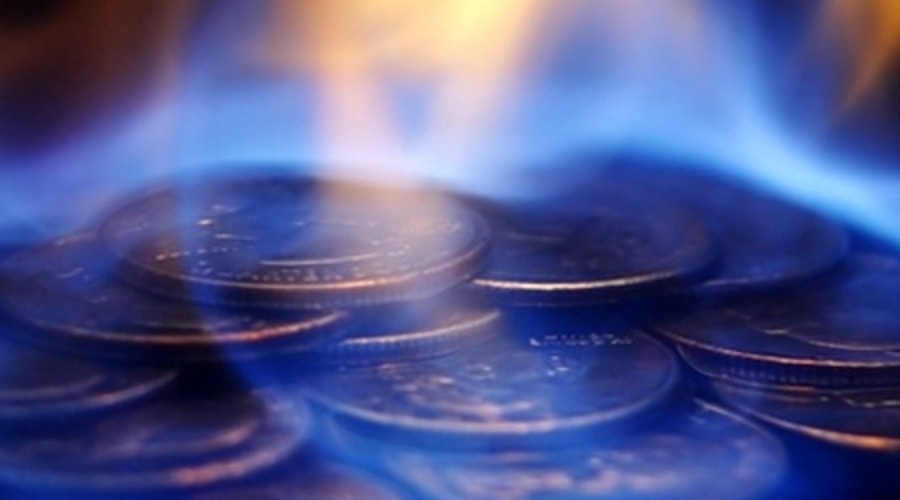
In the world of cryptocurrencies, coin burning and coin minting are two contrasting mechanisms that impact the supply and value of a particular cryptocurrency. While coin burning involves the deliberate destruction of coins, coin minting refers to the creation or addition of new coins to the existing supply. This article aims to provide a comparative analysis of coin burning and coin minting, exploring their definitions, purposes, benefits, challenges, and risks. By understanding these concepts, readers will gain insights into the dynamics of these mechanisms and their implications for the cryptocurrency ecosystem.
Definition of Coin Burning
Coin burning is a process in which a certain number of coins are intentionally removed from circulation, making them unusable and permanently reducing the total supply. This procedure is typically carried out by sending the coins to a designated address, often referred to as a “burn address,” where they become unspendable and are effectively taken out of circulation.
Purpose of Coin Burning
The primary purpose of coin burning is to reduce the total supply of a cryptocurrency. By reducing the supply, the scarcity of the remaining coins is increased, which can potentially drive up their value. Moreover, coin burning is often employed as a strategic measure by blockchain projects to create a deflationary effect, incentivize holding, and improve the long-term viability and stability of the cryptocurrency.
Benefits of Coin Burning
- Scarcity and Increased Value: Coin burning reduces the available supply of a cryptocurrency, leading to increased scarcity. With a limited supply of coins in circulation, the remaining coins become more valuable. This scarcity can potentially drive up the price and value of the cryptocurrency, benefiting holders and investors.
- Incentive for Long-Term Holding: Coin burning creates an incentive for holders to retain their coins for the long term. As the supply decreases due to burning, the value of the remaining coins may increase. This encourages holders to hold onto their coins, anticipating potential price appreciation and long-term returns.
- Enhanced Stability: Coin burning can contribute to the stability of a cryptocurrency. By reducing the total supply, it helps counterbalance potential inflationary pressures. This stability can instill confidence in the market and attract more investors, contributing to a healthier and more sustainable ecosystem.
- Improved Community Trust: When conducted transparently and effectively communicated, coin burning can enhance community trust in a cryptocurrency project. It demonstrates a commitment to maintaining a healthy ecosystem and managing the token supply responsibly. This transparency and trust can attract more users, investors, and partners to the project.
- Reduced Risk of Dumping: Coin burning can help mitigate the risk of coin dumping in the market. By permanently removing coins from circulation, it reduces the likelihood of a sudden influx of coins being sold, which could lead to price volatility and market instability. This contributes to a more controlled and balanced market environment.
Examples of Coin Burning
- Binance Coin (BNB): Binance, one of the largest cryptocurrency exchanges, conducts periodic coin burning events where a portion of BNB coins is burned. These events contribute to reducing the total supply of BNB and potentially increasing its value.
- TRON (TRX): The TRON Foundation has conducted several coin burning events to reduce the supply of TRX tokens. This process aims to enhance the token’s value and ensure a sustainable ecosystem for TRON’s blockchain platform.
Challenges and Risks of Coin Burning
- Lack of Reversibility: Coin burning is an irreversible process, meaning that once coins are burned, they cannot be recovered or restored. This poses a risk if there are any unforeseen circumstances or errors during the burning process.
- Perceived Centralization: Coin burning events conducted by specific entities, such as the development team or a foundation, may raise concerns about centralization. Community members might question the fairness and transparency of the process, potentially impacting the project’s reputation.
Definition of Coin Minting

Coin minting refers to the creation or addition of new coins to the existing supply of a cryptocurrency. Unlike traditional minting, where physical coins are produced, coin minting in the cryptocurrency context involves the generation of new digital tokens through various mechanisms, such as mining or staking.
Purpose of Coin Minting
- Rewarding Network Participants: Coin minting provides a mechanism to reward participants who contribute to the security and operation of the cryptocurrency network. In proof-of-work (PoW) cryptocurrencies, minting new coins through mining incentivizes miners to invest computational power and resources into solving complex mathematical problems. Successful miners are rewarded with newly minted coins as a compensation for their efforts.
- Promoting Stakeholder Engagement: Coin minting plays a crucial role in proof-of-stake (PoS) cryptocurrencies. In PoS systems, individuals can participate in coin minting by “staking” their holdings. By holding and locking their coins as collateral, stakeholders actively contribute to the consensus and security of the network. In return for their participation, they receive additional coins as rewards, encouraging long-term engagement and commitment.
- Maintaining Consensus: Coin minting mechanisms help maintain the consensus and integrity of the cryptocurrency network. In PoW systems, miners compete to solve complex mathematical puzzles, ensuring that transactions are verified and added to the blockchain in a decentralized manner. This process of minting new coins incentivizes miners to invest in the network’s security, as they have a financial stake in its success.
- Ensuring Liquidity and Transactional Utility: Coin minting helps ensure liquidity within the cryptocurrency ecosystem. By increasing the overall supply of coins, minting mechanisms contribute to the availability of tokens for transactions and trading. This liquidity is essential for fostering a vibrant marketplace and enabling users to utilize the cryptocurrency for various purposes, such as buying goods and services or participating in decentralized applications.
Benefits of Coin Minting
- Network Security: Coin minting plays a vital role in ensuring the security of a cryptocurrency network. In proof-of-work (PoW) systems, minting new coins through mining incentivizes miners to contribute their computational power to validate transactions and maintain the integrity of the blockchain. This collective effort strengthens the network against potential attacks.Stakeholder
- Participation: Coin minting also promotes stakeholder involvement in the cryptocurrency ecosystem, especially in proof-of-stake (PoS) networks. By holding and staking their coins, participants can actively contribute to the consensus process and block validation. In return, they receive additional coins as rewards, encouraging long-term engagement and commitment to the network.
- Incentivizing Investment: Coin minting provides an attractive incentive for individuals to invest in a particular cryptocurrency. The opportunity to earn newly minted coins through mining or staking encourages investors to acquire and hold the cryptocurrency, thereby promoting its adoption and liquidity in the market.
- Funding Mechanism: Coin minting serves as a funding mechanism for blockchain projects. Newly minted coins can be allocated to support ongoing development, research, marketing efforts, or other initiatives within the ecosystem. This ensures the availability of resources to further enhance and expand the project.
- Fair Distribution: Coin minting, when designed properly, can contribute to a fair distribution of the cryptocurrency. By allowing users to earn coins through active participation and contribution, minting mechanisms help prevent the concentration of wealth and power in the hands of a few individuals or entities. This fosters a more inclusive and decentralized ecosystem.
Examples of Coin Minting
- Bitcoin (BTC): Bitcoin, the first and most prominent cryptocurrency, mints new coins through the process of mining. Miners compete to solve complex mathematical problems, and the successful miner is rewarded with newly minted Bitcoins.
- Cardano (ADA): Cardano utilizes a PoS consensus mechanism, where users can mint new ADA coins by participating in the staking process. Stakeholders who delegate their coins to a stake pool contribute to block validation and receive rewards.
Challenges and Risks of Coin Minting
- Inflationary Pressure: Coin minting can lead to an increase in the overall supply of a cryptocurrency, potentially causing inflationary pressure. If the rate of minting exceeds the growth in demand, it may negatively impact the value and stability of the cryptocurrency.
- Energy Consumption: In PoW-based cryptocurrencies, coin minting through mining requires substantial computational power, resulting in high energy consumption. This aspect has raised concerns regarding the environmental impact and sustainability of such networks.
Comparative Analysis
When comparing coin burning and coin minting, several factors need to be considered:
- Supply Dynamics: Coin burning reduces the total supply, while coin minting increases it. The impact on the supply directly influences the scarcity and value of the cryptocurrency.
- Token Holder Incentives: Coin burning encourages long-term holding and potential price appreciation. Coin minting rewards participants for their contributions, either through mining or staking.
- Blockchain Ecosystem: Coin burning aims to improve the overall stability and viability of the cryptocurrency ecosystem. Coin minting supports network security, stakeholder participation, and funding for development.
Conclusion
Therefore, coin burning and coin minting represent two distinct mechanisms with contrasting effects on the supply and value of cryptocurrencies. While coin burning reduces supply and enhances scarcity, coin minting increases supply and provides incentives for network security and stakeholder participation. Understanding these mechanisms allows investors, users, and blockchain enthusiasts to make informed decisions based on their goals and the dynamics of specific cryptocurrencies.
FAQs
Can coin burning be reversed?
Coin burning is an irreversible process. Once coins are burned, they cannot be recovered or restored.
How does coin burning affect the value of a cryptocurrency?
Coin burning reduces the available supply of a cryptocurrency, potentially increasing its scarcity and driving up its value.
What are the risks of coin minting?
Coin minting can lead to inflationary pressure and high energy consumption in the case of proof-of-work cryptocurrencies.
Do all cryptocurrencies utilize coin burning or coin minting?
No, not all cryptocurrencies employ these mechanisms. It depends on the specific design and goals of each project.
Are there any regulatory considerations regarding coin burning and minting?
Regulatory frameworks surrounding coin burning and minting vary across jurisdictions. It’s essential to comply with local laws and regulations when implementing these mechanisms.
I’m a highly experienced and well-respected author in the field of cryptocurrency. I have been writing about Bitcoin, Ethereum, and other digital assets for over 5 years. In addition to my career as an author, I’m also a highly sought-after keynote speaker and consultant on all things crypto and I’m passionate about helping people understand this complex and often misunderstood industry.
